Pest Control: Garlic Spray
Fight fungal diseases and insects in your garden
If you have healthy soil and use the companion planting method,...

Start your own garden the simple way
| Done in | a few days |
|---|---|
| Skill level | easy |
With a small area around your home, you can create your own permaculture garden in just a few simple steps. Grow your own vegetables to save money and enjoy healthier nutrition.
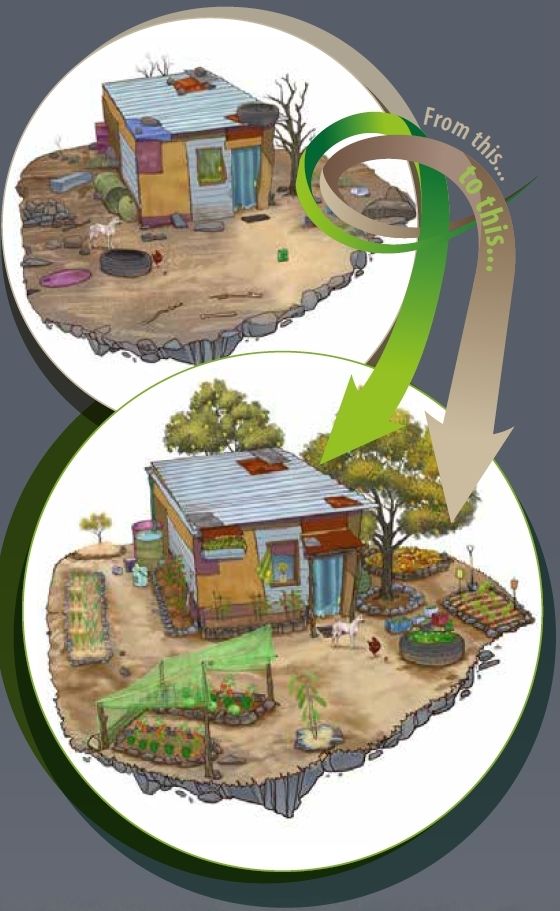
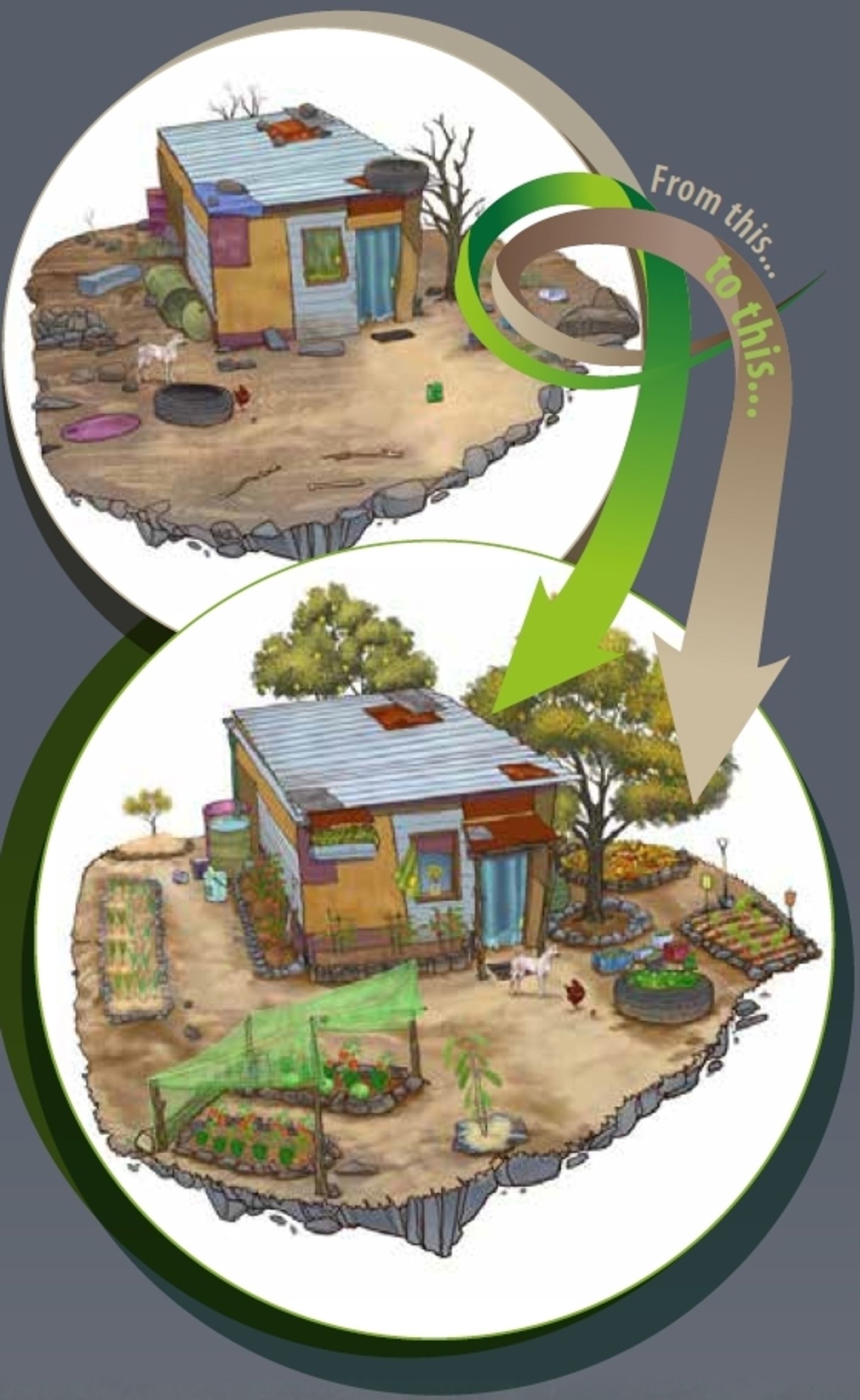

Published under CC:BY-SA by
Nutrition and Food Security Alliance of Namibia (NAFSAN)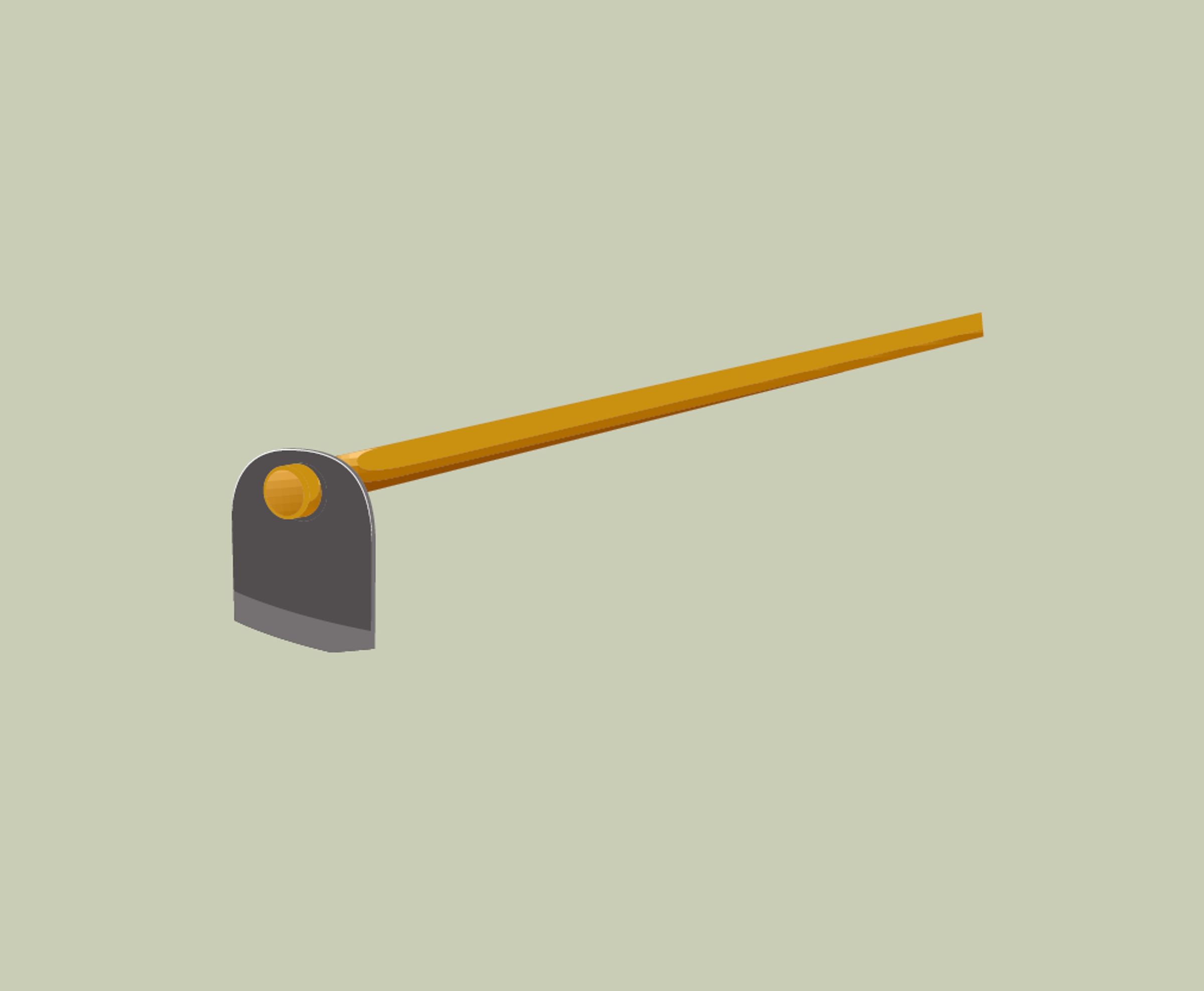

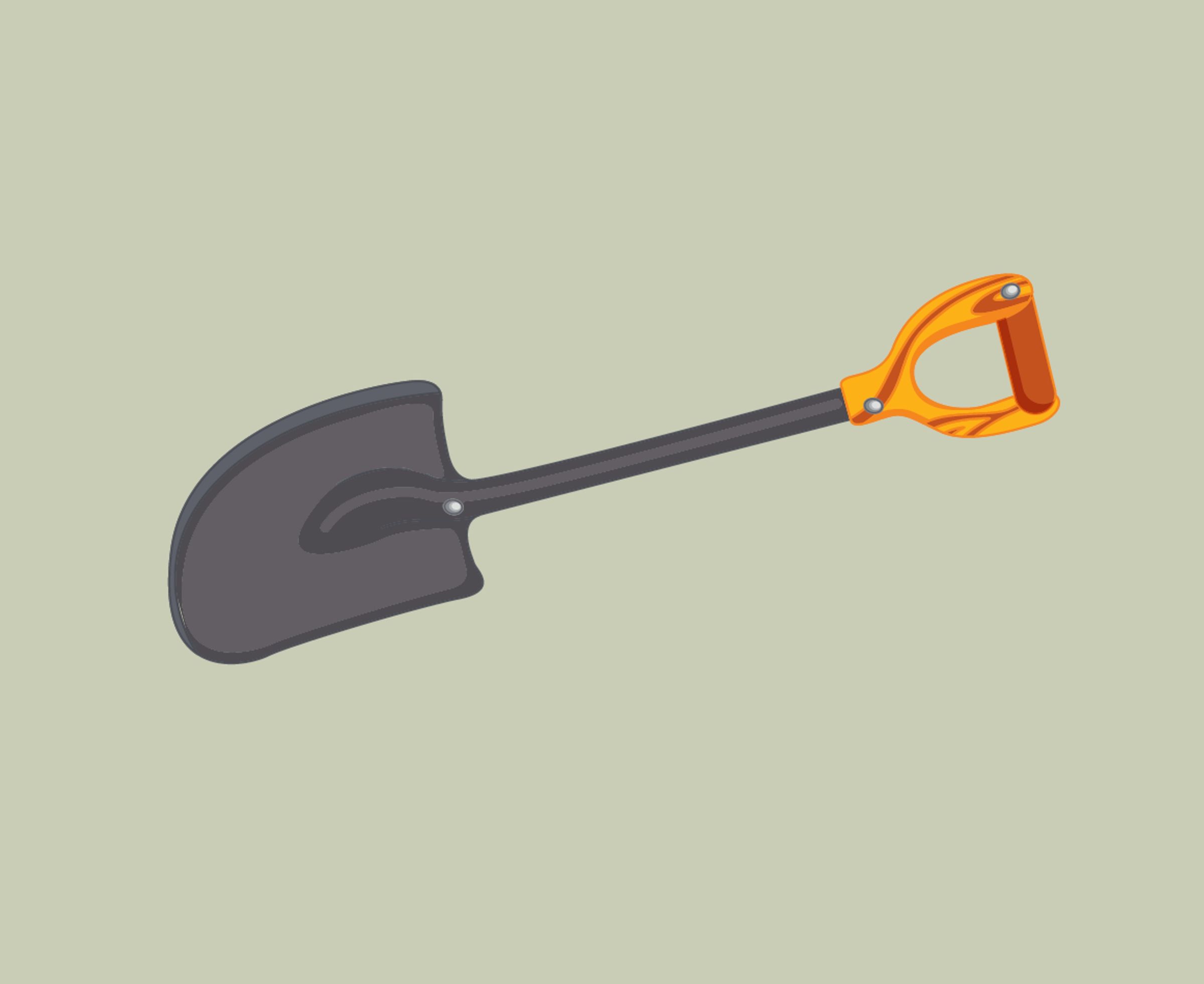
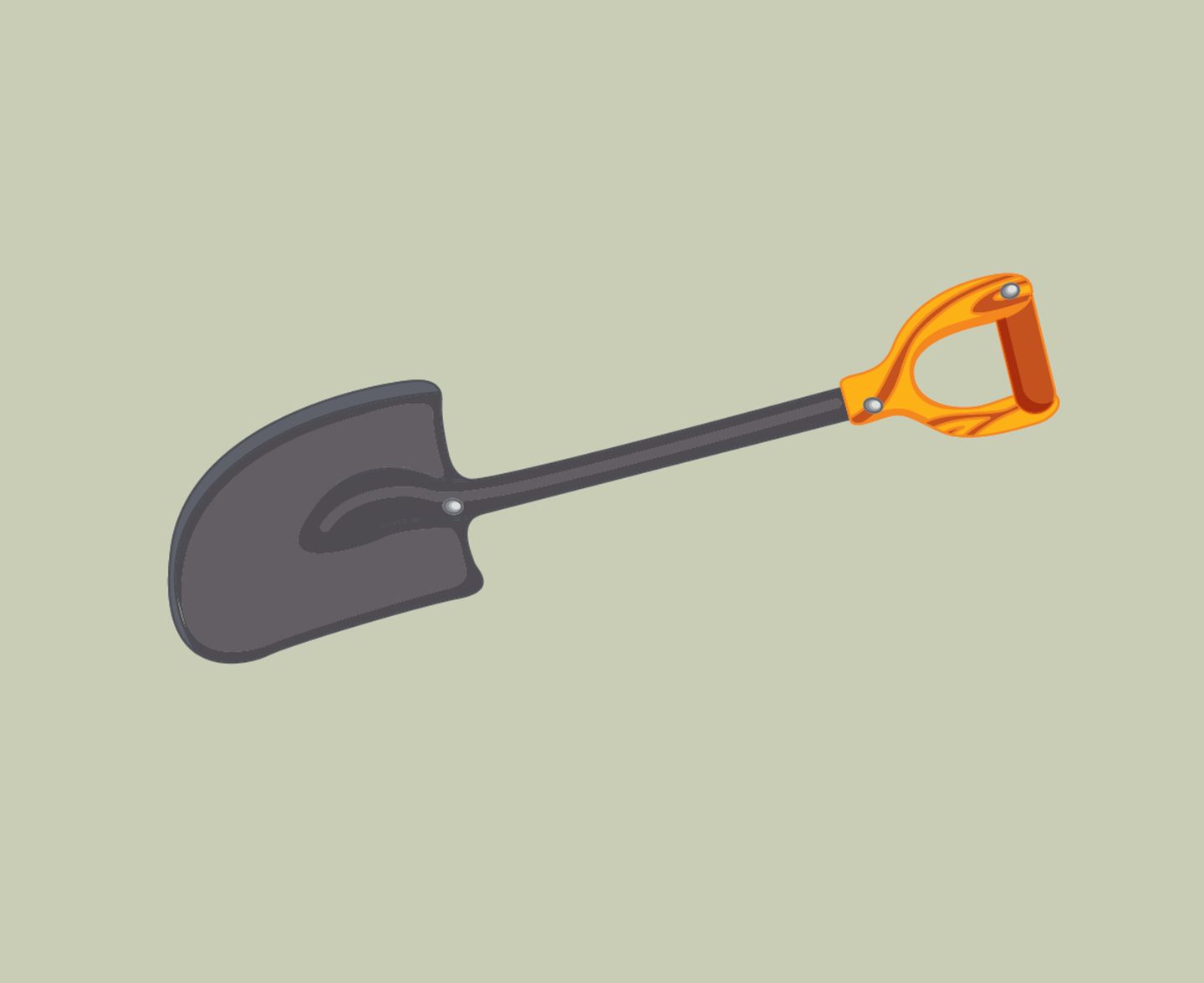
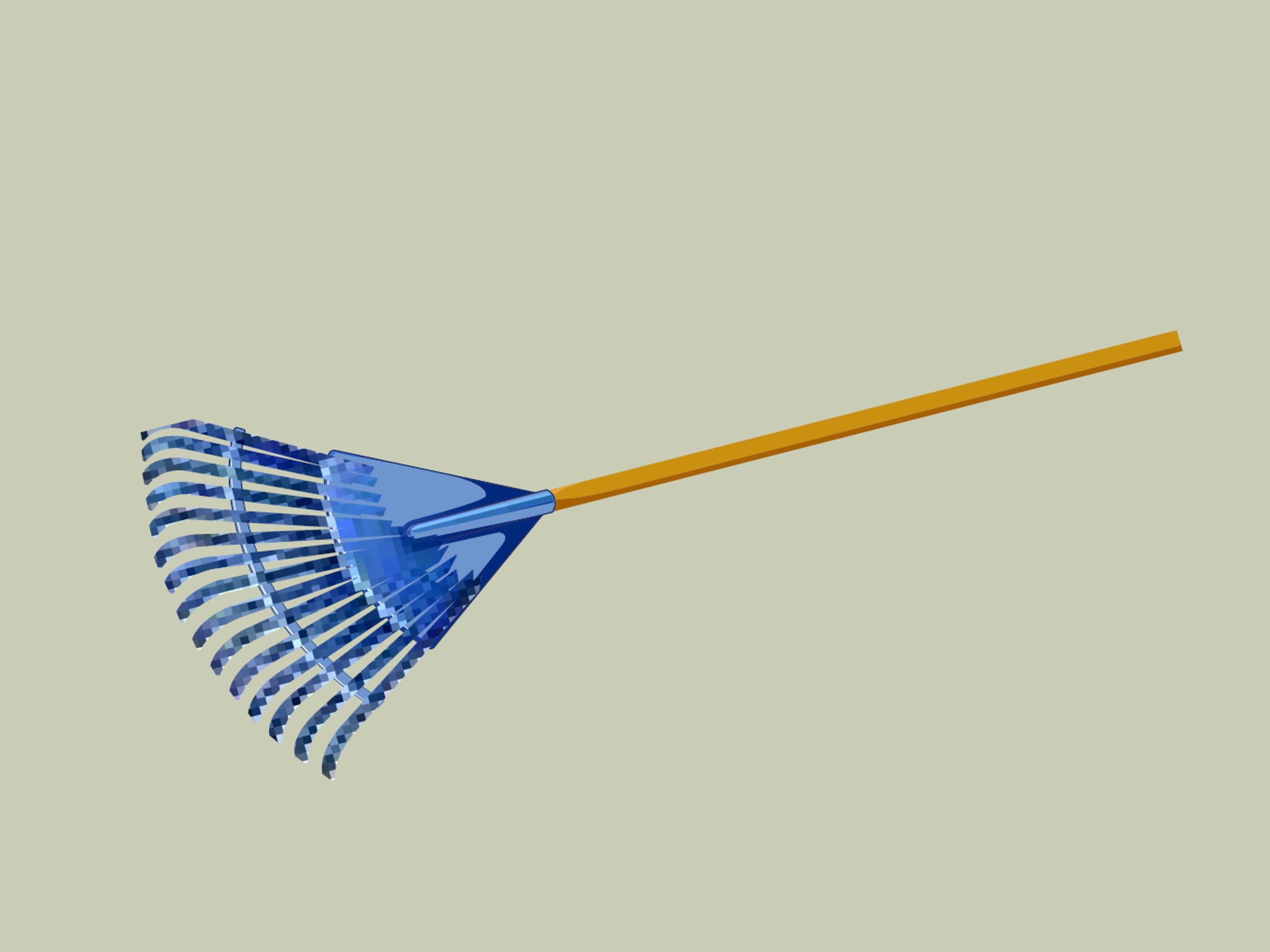
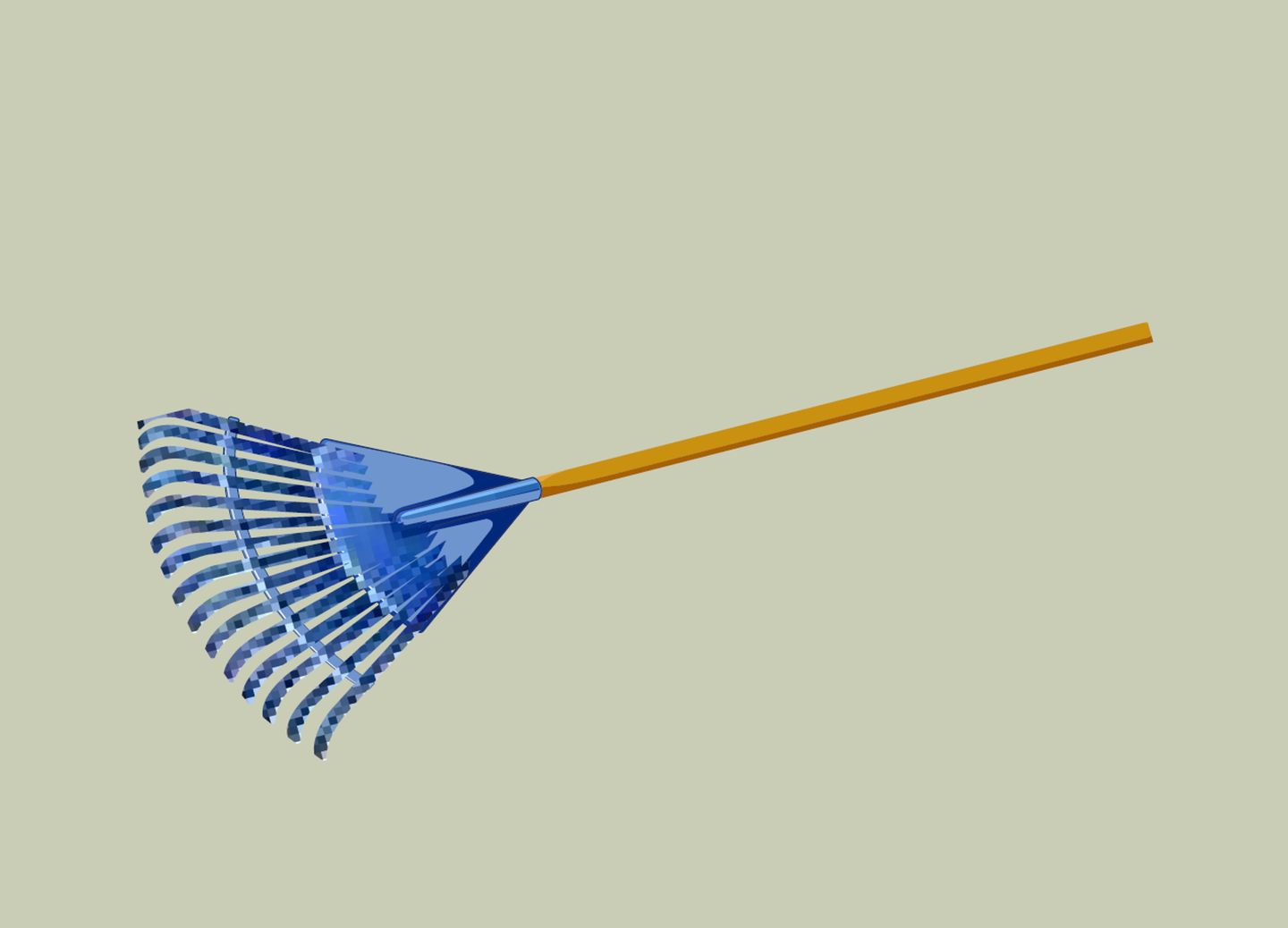
You don’t have to have proper gardening tools. You can use your own home-made tools out of useful objects that are lying around, such as old iron bars.
Walk around your home to find the best space for your garden bed(s) or for container gardening. Observe with focus on Water, Sun, Wind, and Security.

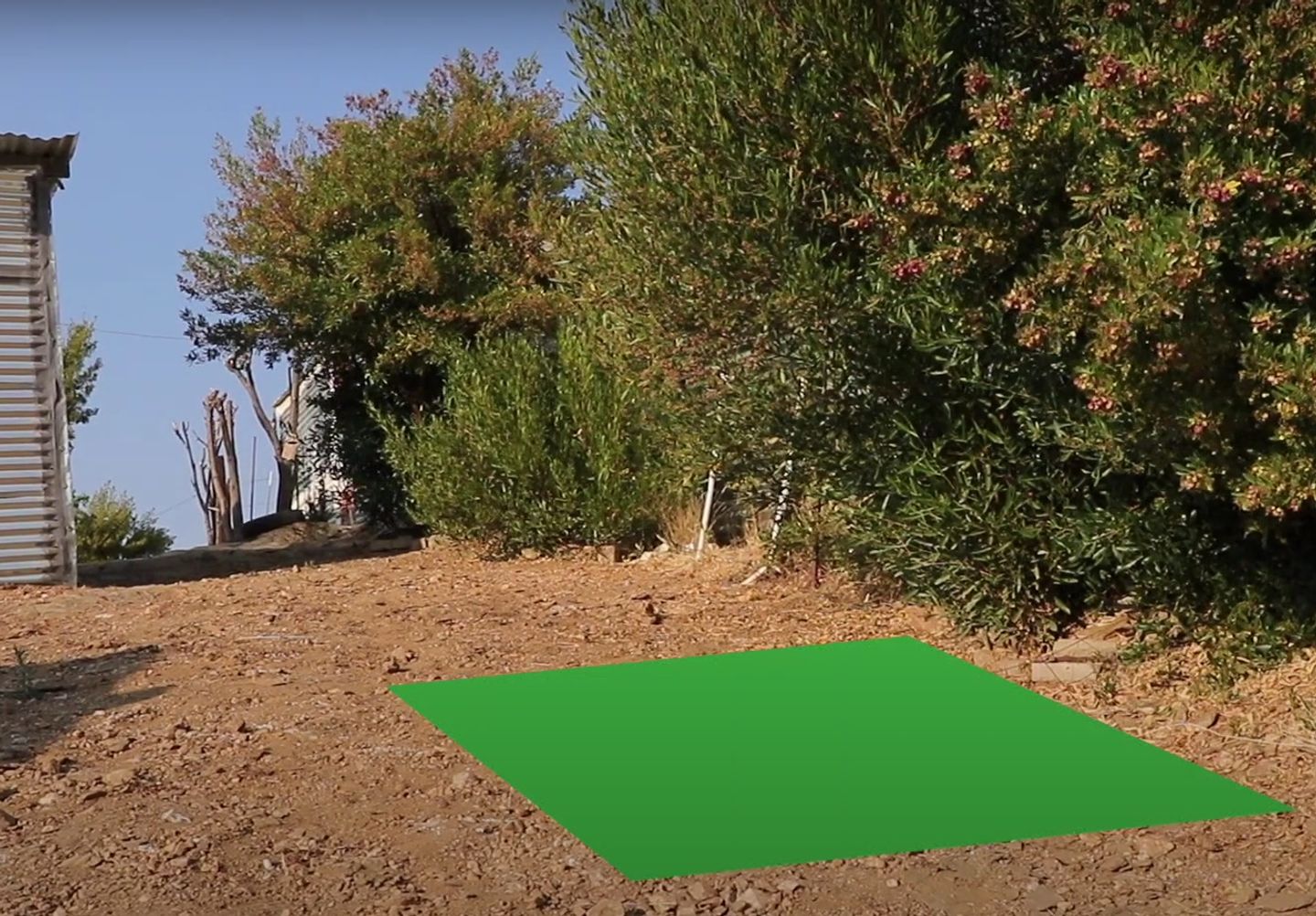
Can you catch water into your garden from any runoff from the soil/slope around your shack or from your roof or your outdoor washing area/shower?
Look at the sun’s position and its path around your space:
Are there strong winds coming from one direction? Most plants don’t like wind. Use natural wind-protection like bushes or create a wind breaker to protect your garden.
Think of possible threats, such as people walking, dogs, chicken.
Each bed should not be wider than 60-70cm (arm’s length). This way you can reach all your plants easily from only one side. If you are able to access your vegetable bed from both sides, then it can be up to 1.20m wide (double reach bed).


Draw the boundaries of the garden beds in the sand. Mark them with sticks.


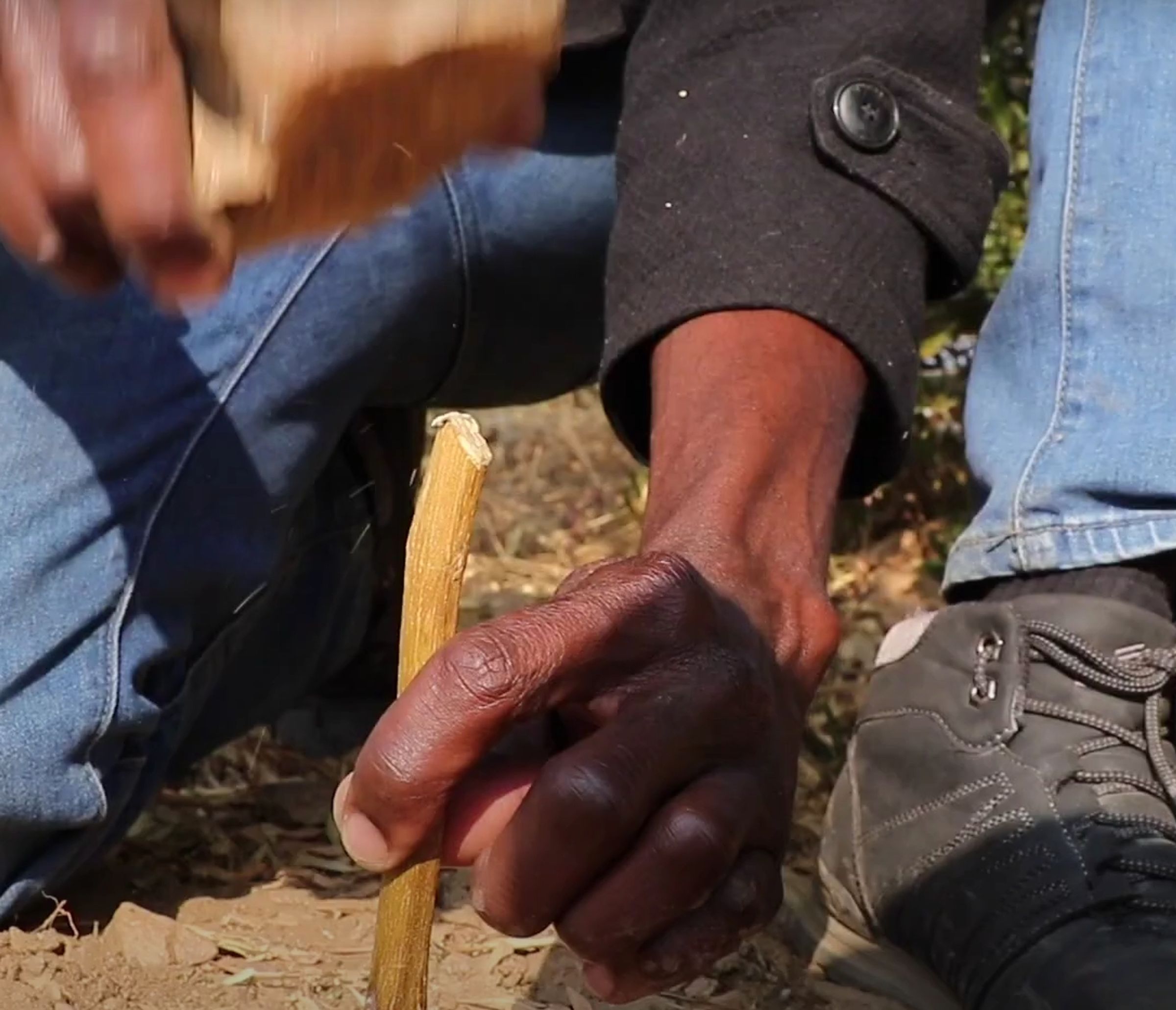
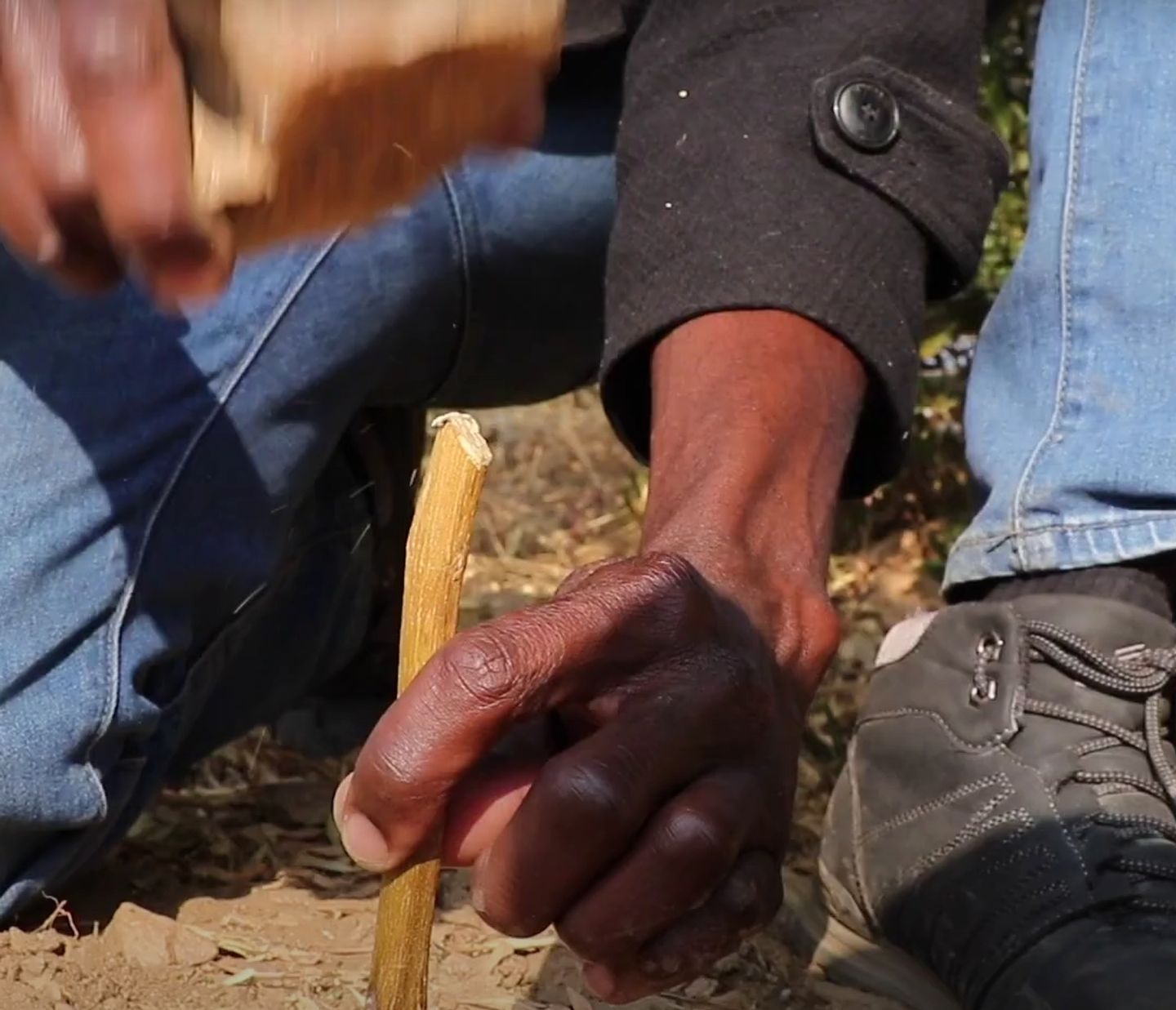
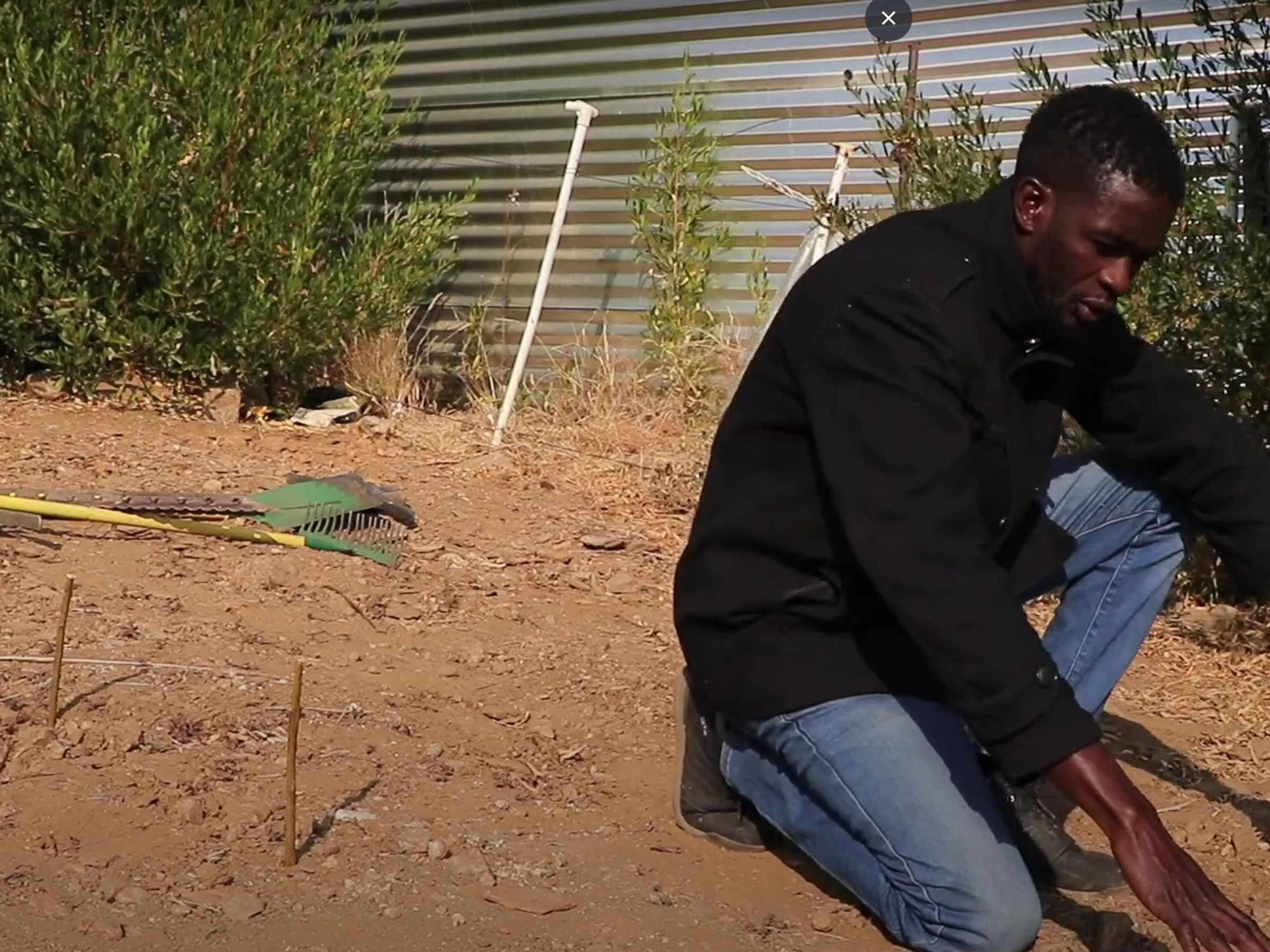
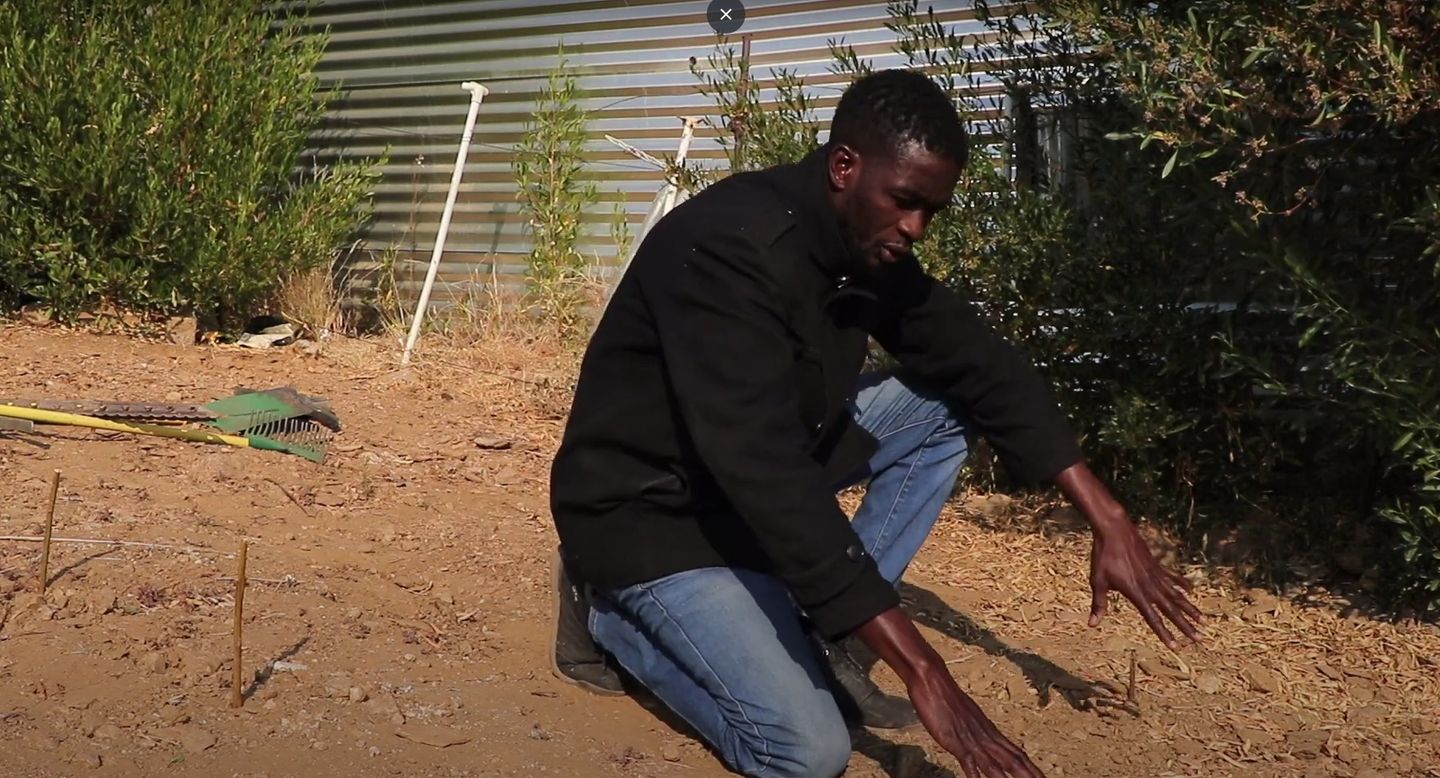
At least a good hand deep of loose soil, 40cm deep
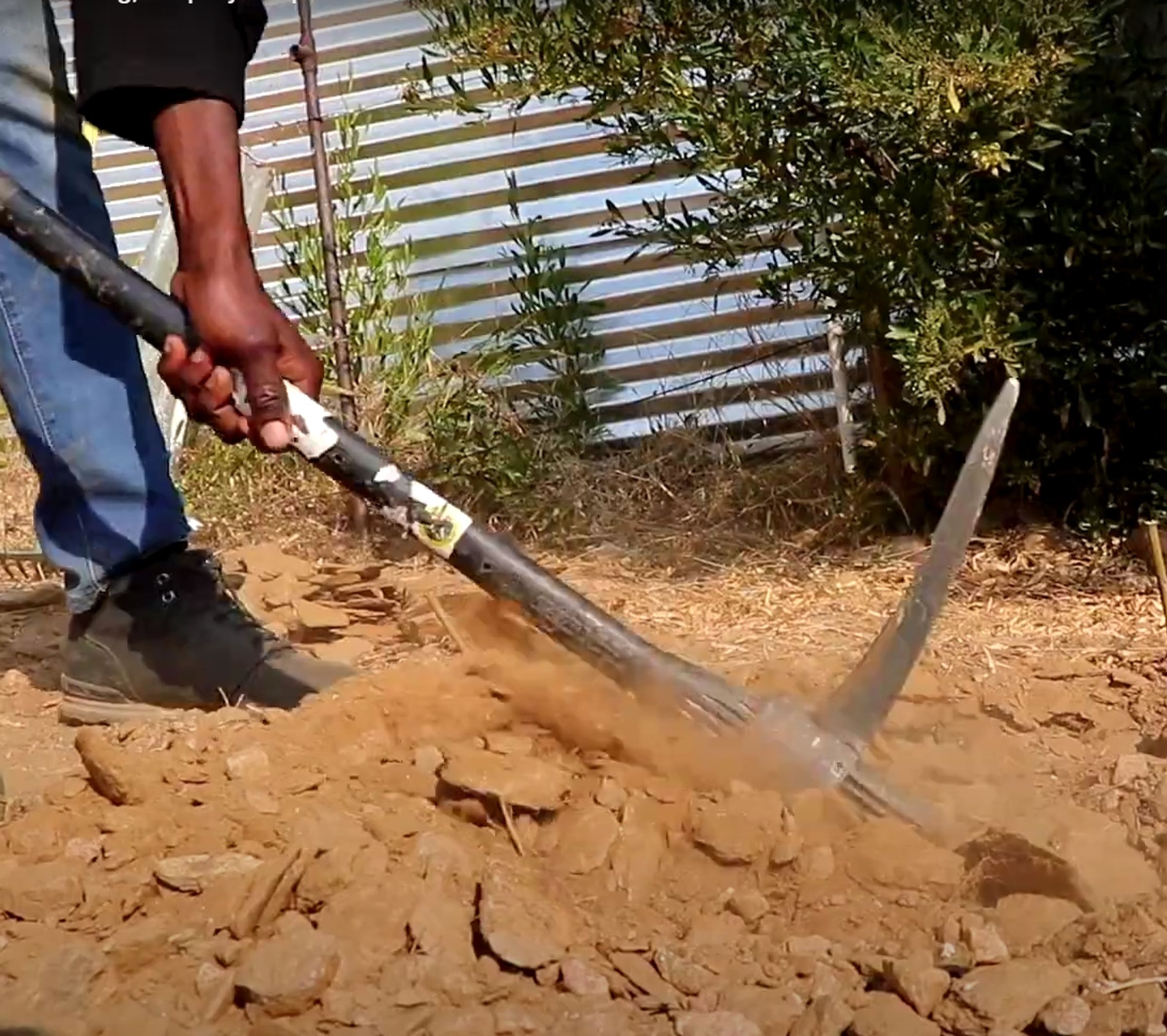
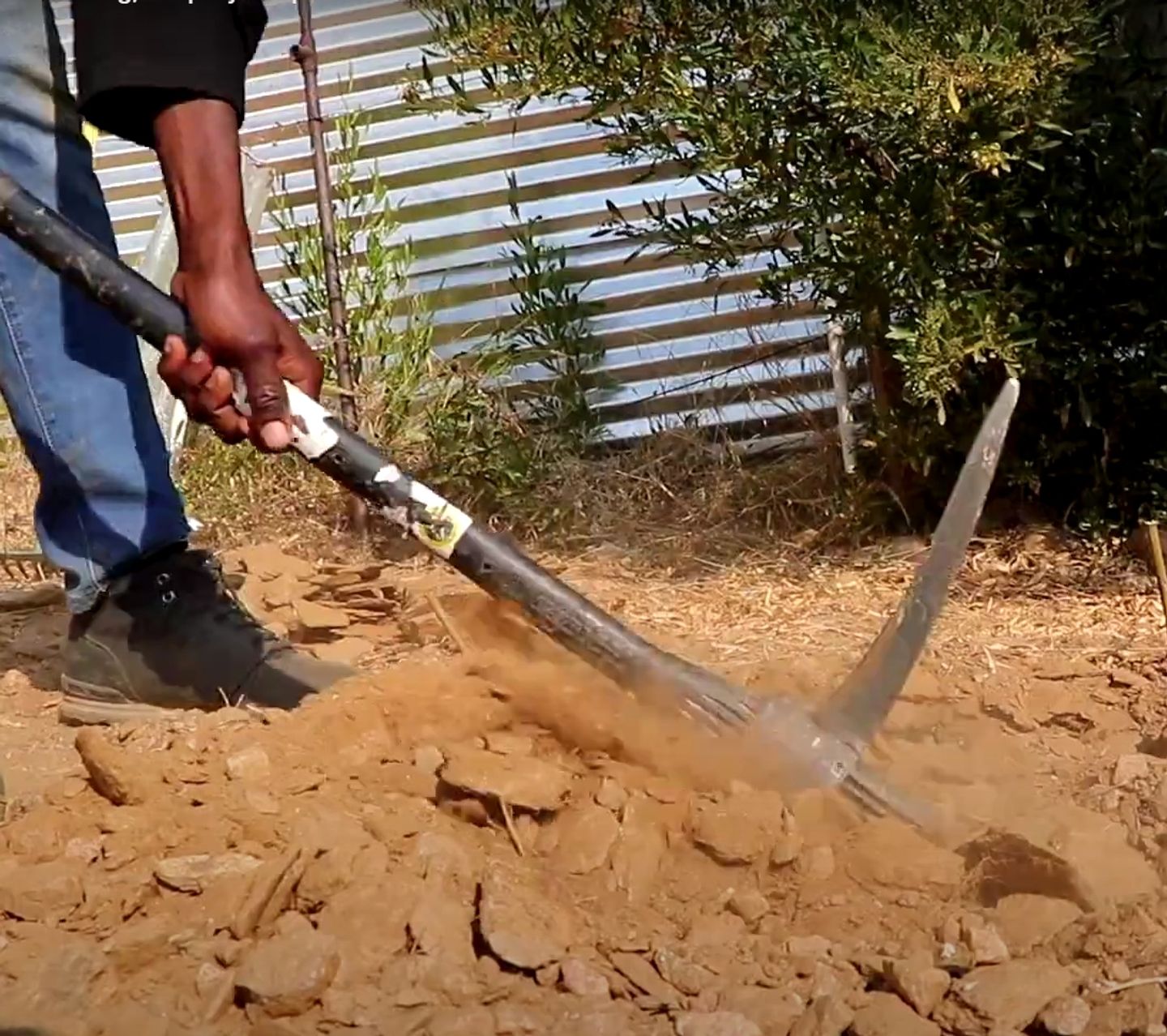
You can reuse the rocks you removed earlier.
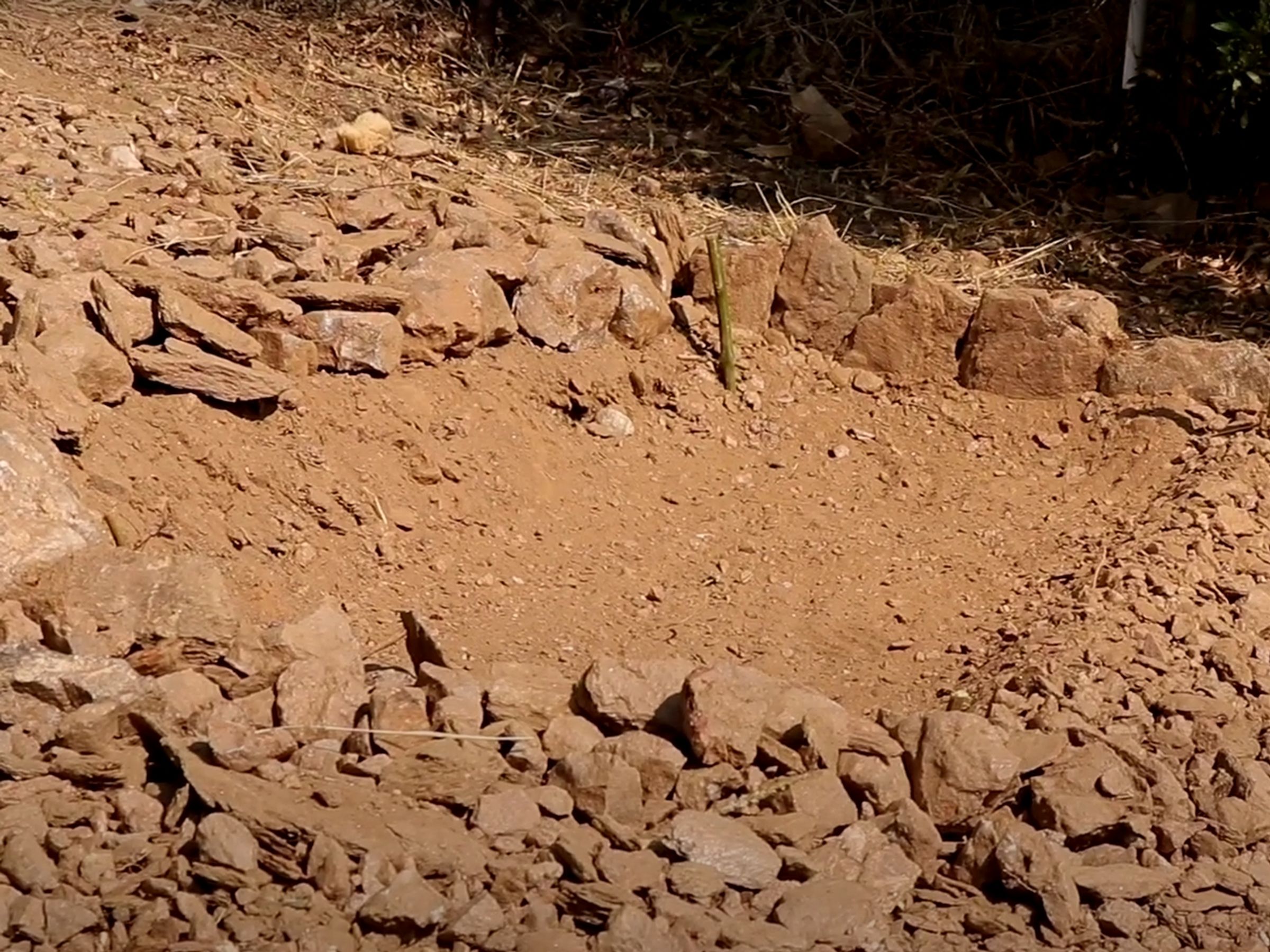

This is important so that water doesn’t flow off on one side, or gathers in one part of the bed. All plants should get equal amounts of water for them to grow best. Use a rake for this step if you have.
⚠ Careful! Once you finished your vegetable bed, DO NOT step into your bed, as this will compact the soil and make it more difficult for your future vegetables to grow.
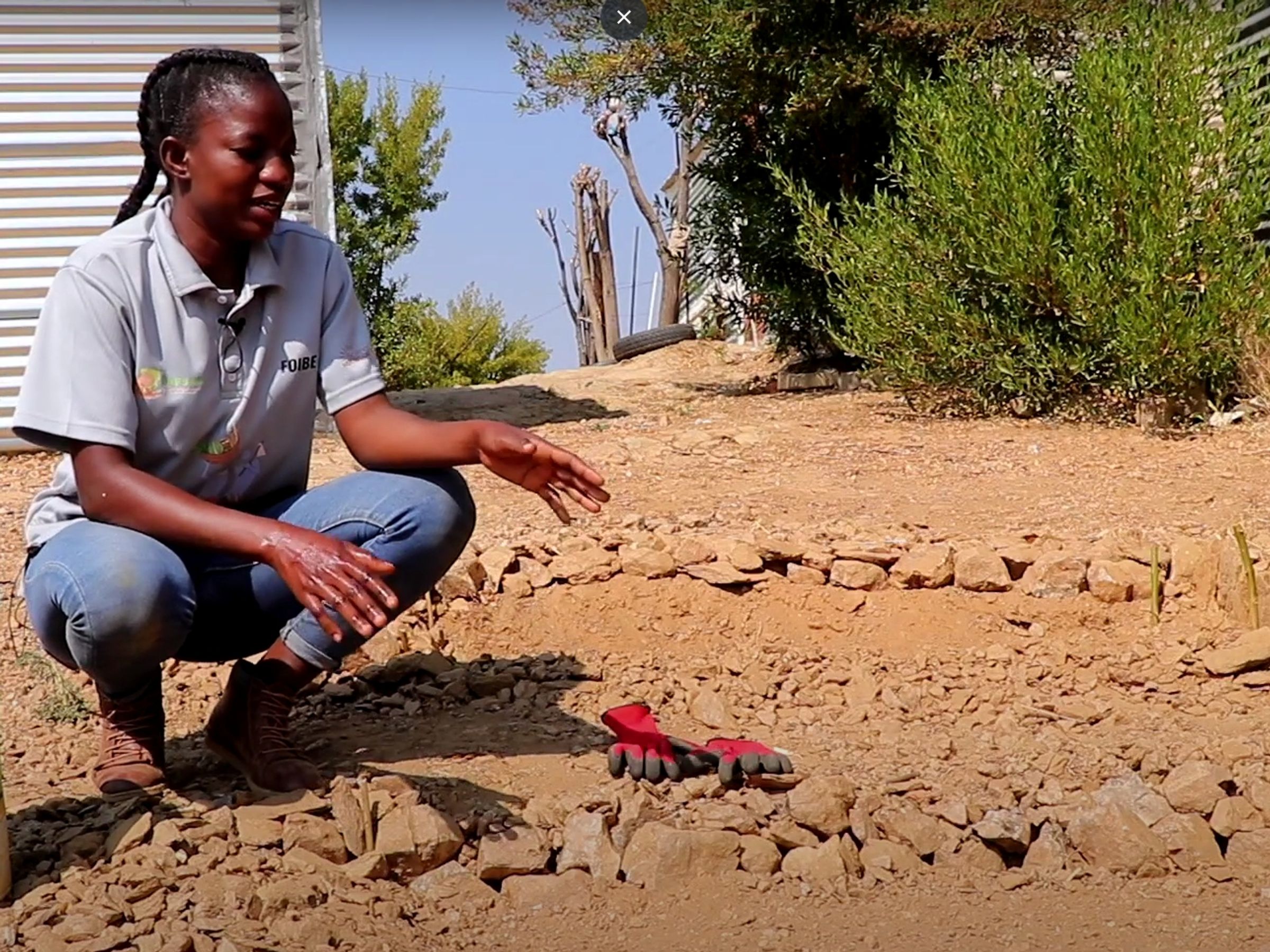
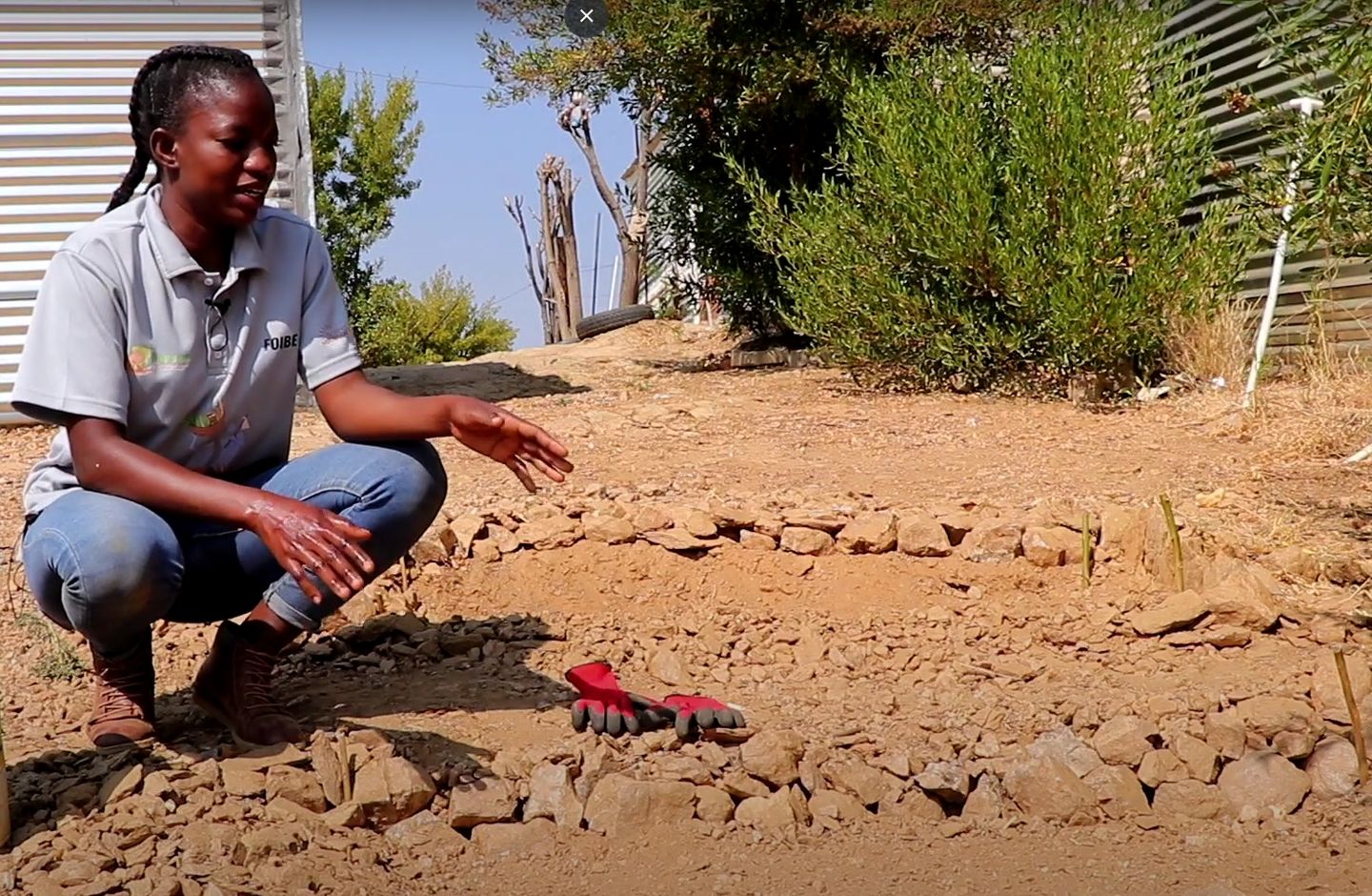
Use a ‘soft’ watering method = a watering can, or make small holes at the bottom of a bottle or tin, so that water drips gently and ‘softly’ onto the ground and into the soil. This way no vegetables get hurt (holes can damage the roots) and no soil gets flushed away. Always add water onto the soil around the plants and not onto the plants themselves, as this can spread plant diseases and/or damage the plants.

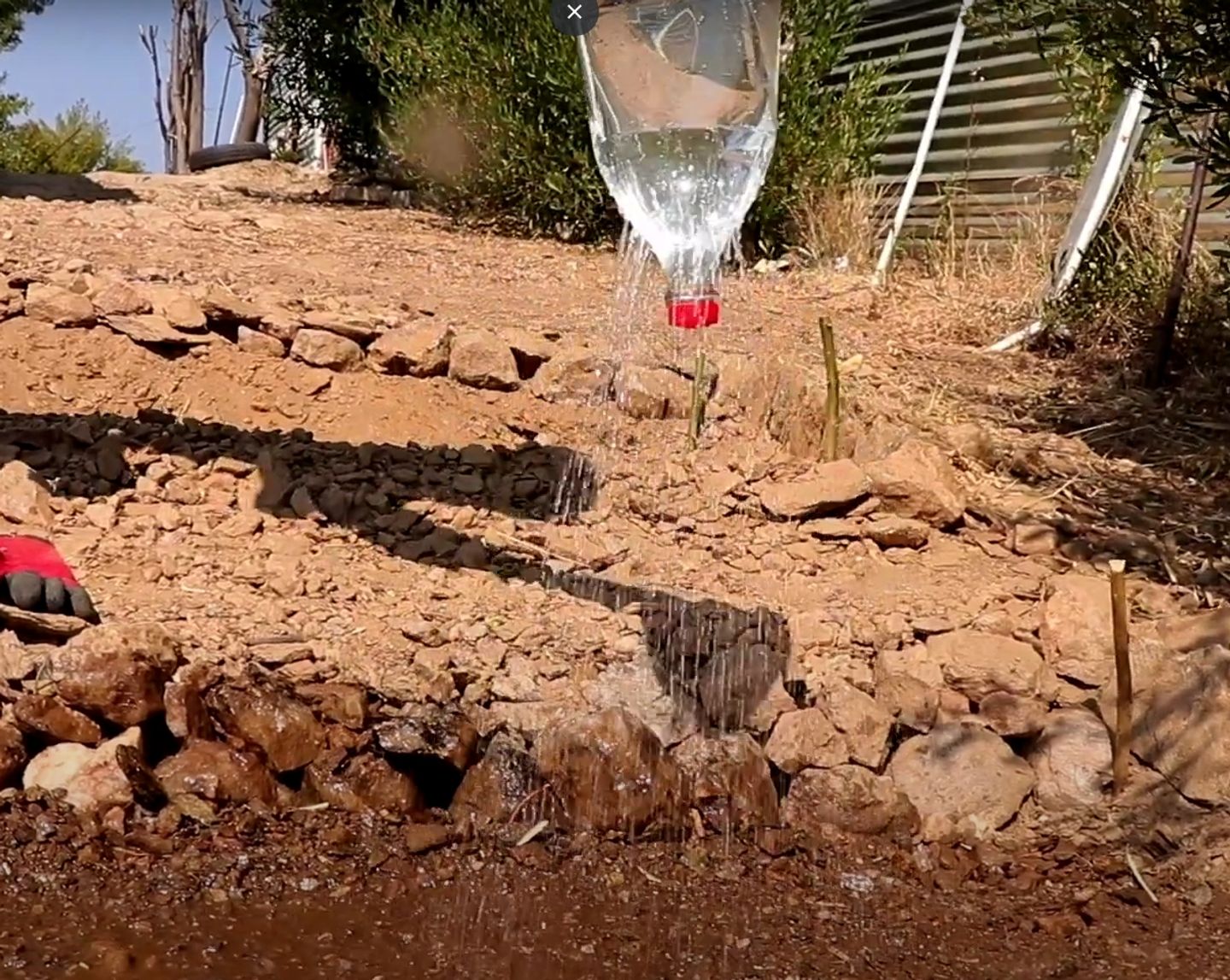
Good soil is always ALIVE with lots of micro-organisms. These micro-organisms are very small, and they work together with the roots or your plants to feed your plants the foods they need.
You can also add compost/mature (= old/dry) from cows, goats, sheep, donkeys, horses and even chicken manure (careful, chicken manure is very strong. It must be old so that it does not hurt and burn your plants). Sprinkle the compost/ manure on the soil between your plants and make sure you mulch afterwards, so your compost/ manure is protected and does not dry out.
Using a pit-compost is an easy way to make your organic waste useful and help your soil become much more fertile.
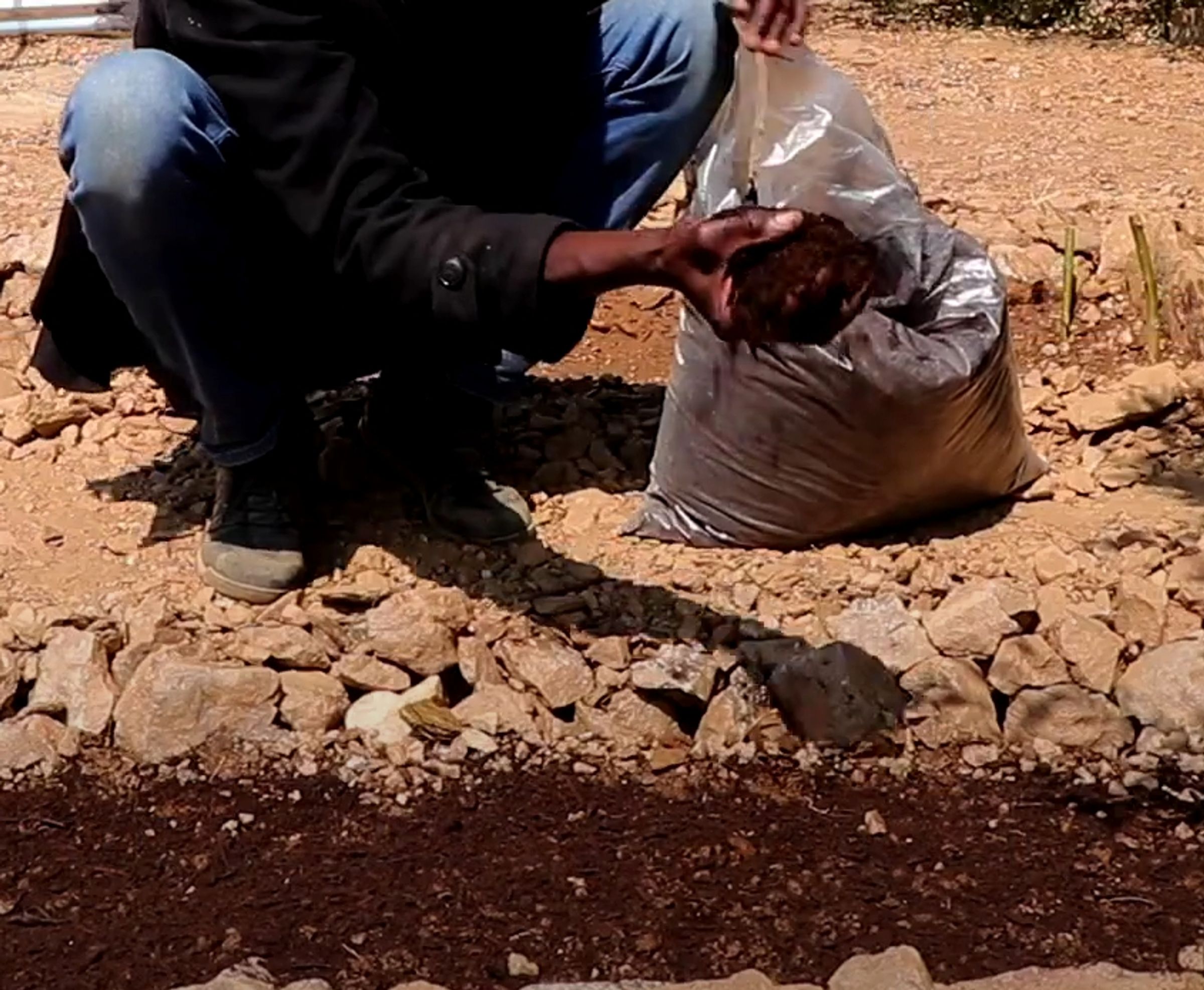
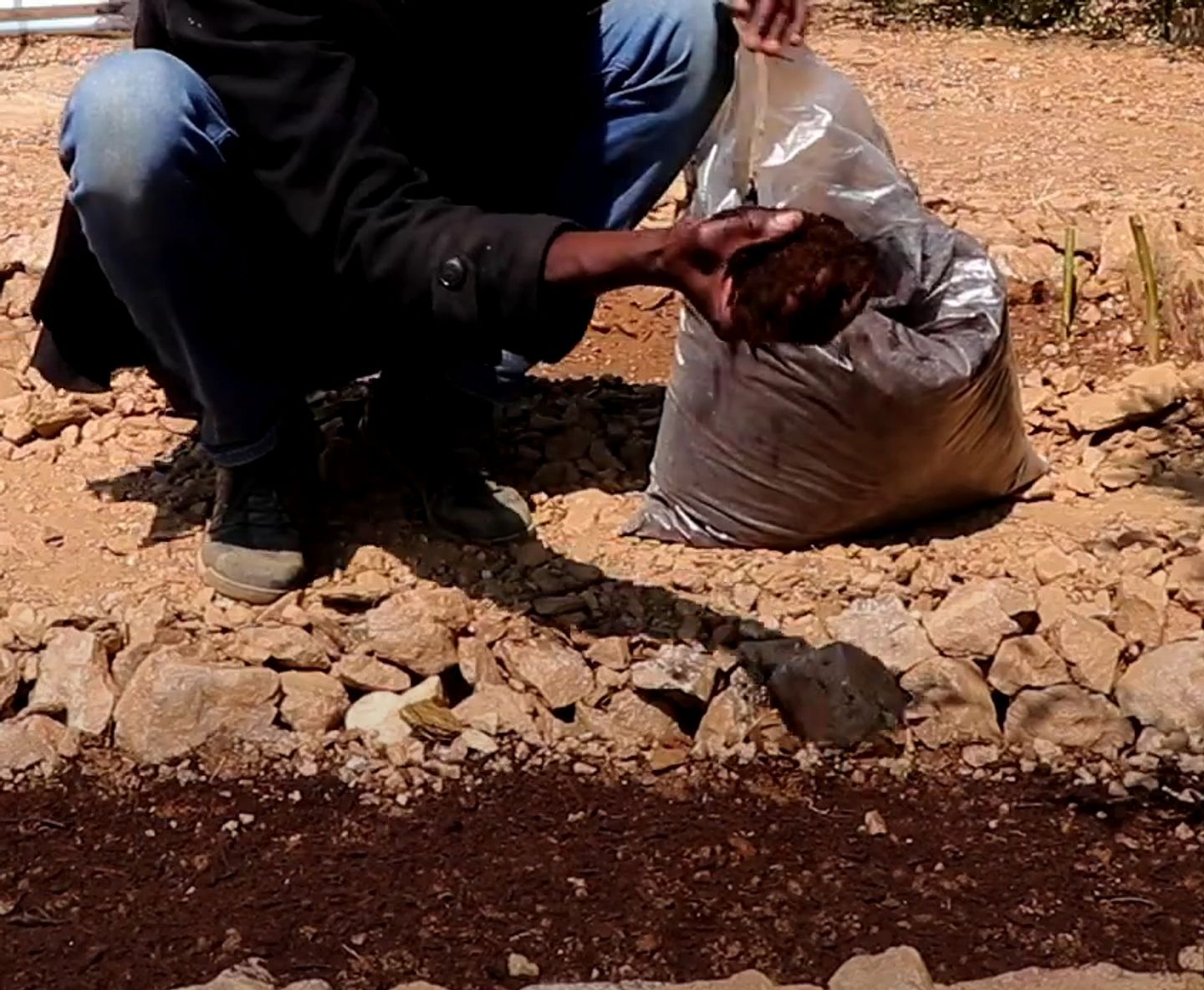
This is a natural way of growing vegetables and other plants together in the same bed, so they support each other to grow better and healthier. It also keeps pest away, for example by mixing herbs, garlic or flowers among your vegetables.
TYPICAL COMBINATIONS ARE:
Onion + Carrot + Cabbage + Beetroot OR
Beetroot + Spinach + Onion
Peppers + Spinach + Carrots OR
Tomatoes + Carrots + Onions + Beans
Kale + Beetroot + Onions + Spinach OR
Cabbage + Beetroot + Onions
Herbs +Garlic +Flowers
If you have a SINGLE REACH BED then position the vertical plants (beans, tomatoes, cucumber, etc.) at the very back, the larger plants (i.e. peppers, chilies, kale) in the middle, and at the front you plant smaller vegetables (onion, carrots, beetroot, etc.)
If you have a DOUBLE REACH BED, then you should put the largest vegetables (beans, tomatoes, peppers, kale, etc.) in the middle of the bed and the smaller vegetables on either side. In this way, you can access all your smaller vegetables without the larger vegetables obstructing your hands.
REMEMBER: build a trellis (or sticks) for your tomatoes, that they don’t hang on the ground, where they can rot or pests can get to them.
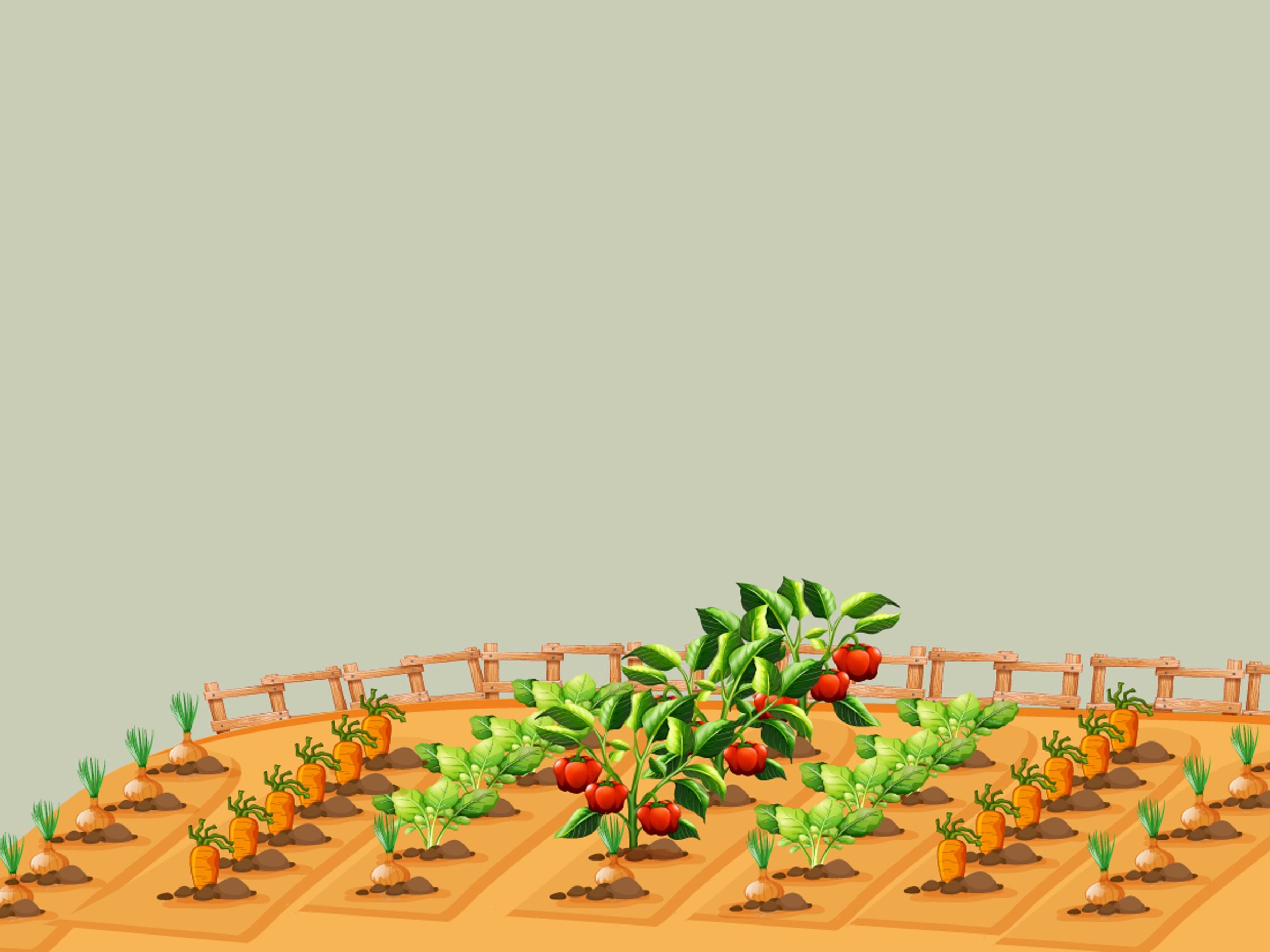
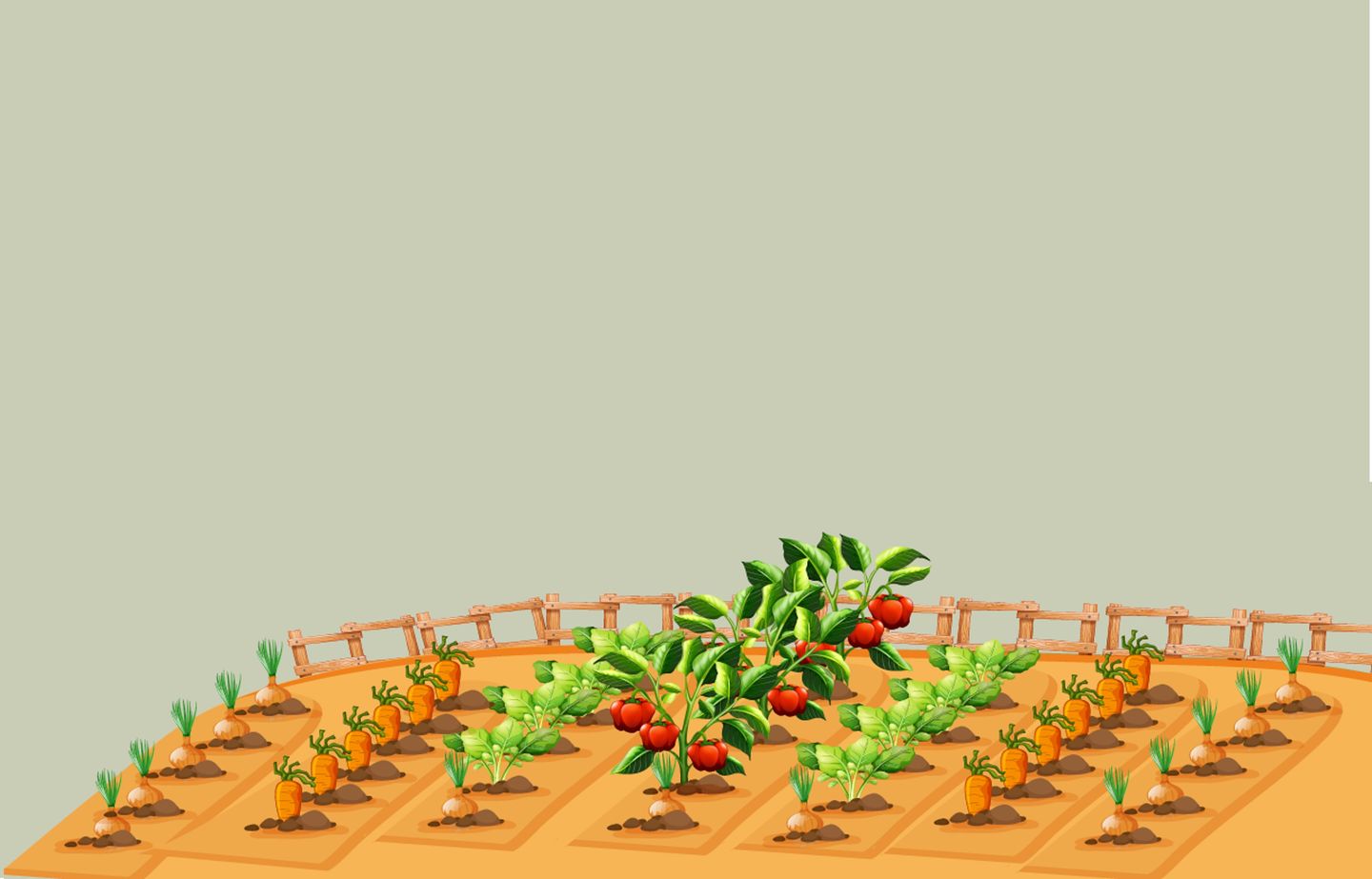
Here is an EXAMPLE of a double reach bed, being 3m long x 1.20m wide:
O = ONIONS. 2-3 ROWS OF ONIONS Onions are a natural pest repellent, and you can grow them around the border of your bed to discourage pests form entering your bed.
C = CARROTS. 2-3 ROWS OF CARROTS Carrots go well with onions. They are small and will not impede you to reach the larger vegetables in the middle of the bed.
S = SPINACH. 1-2 ROWS OF SPINACH Here you could also add a row of beetroot if you like (Tip: Beetroot leaves are also edible, you can harvest and prepare them like spinach!)
P = PEPPERS. 1 ROW OF PEPPERS ABOUT 50 CM APART You could also grow tomatoes here, but then you need to build a trellis in the middle of the bed to keep the tomatoes away from the ground, to grow healthier and become more productive plants (vertical space)!
In this way you see if you overlooked some space or made any miscalculation. Information on seed packets show you how much space your seeds need.
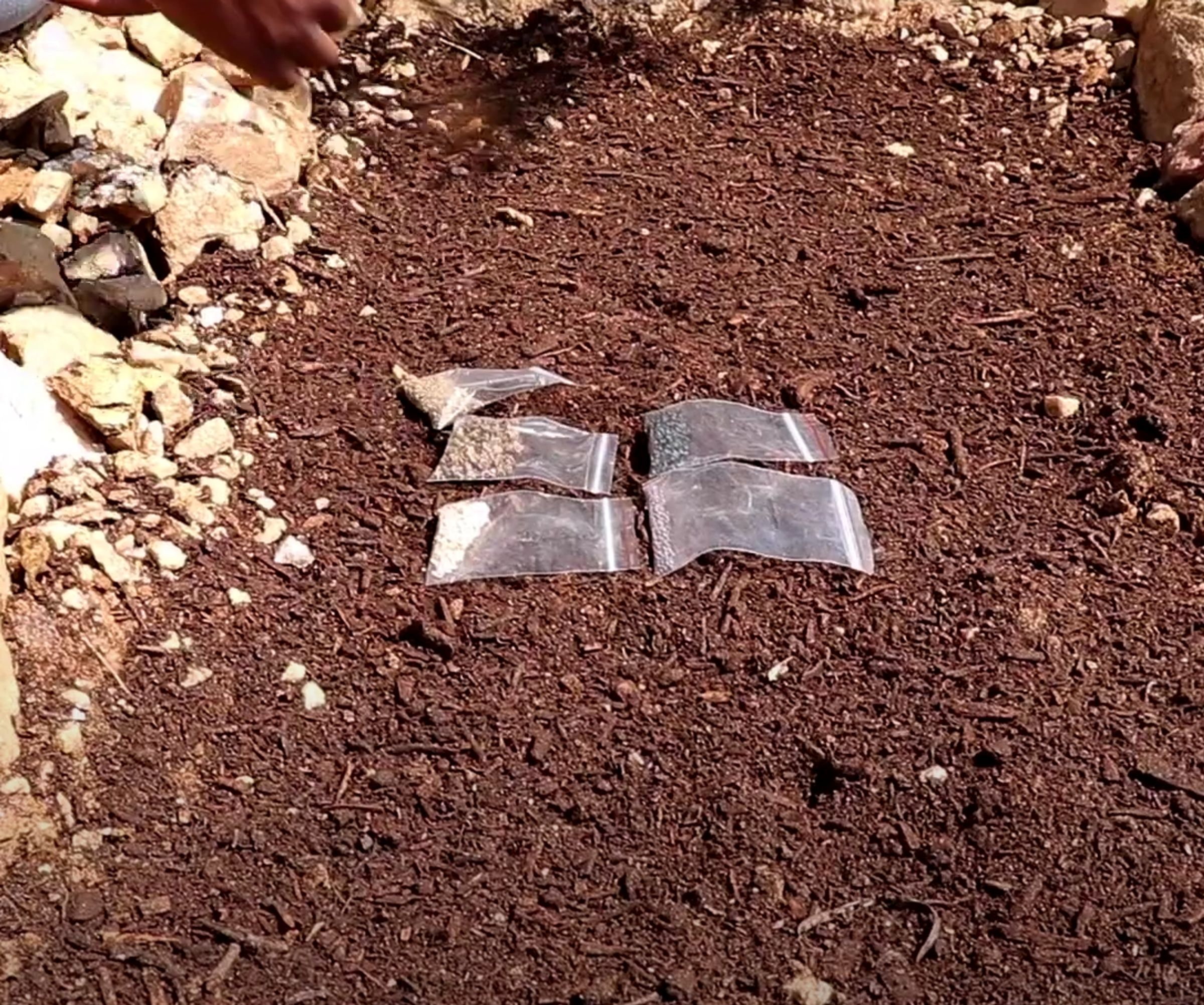

Make sure you plant the seeds in the right depth, not too deep. Very small seeds (like lettuce) can be sown on the surface, and you then just sprinkle some soil over it.

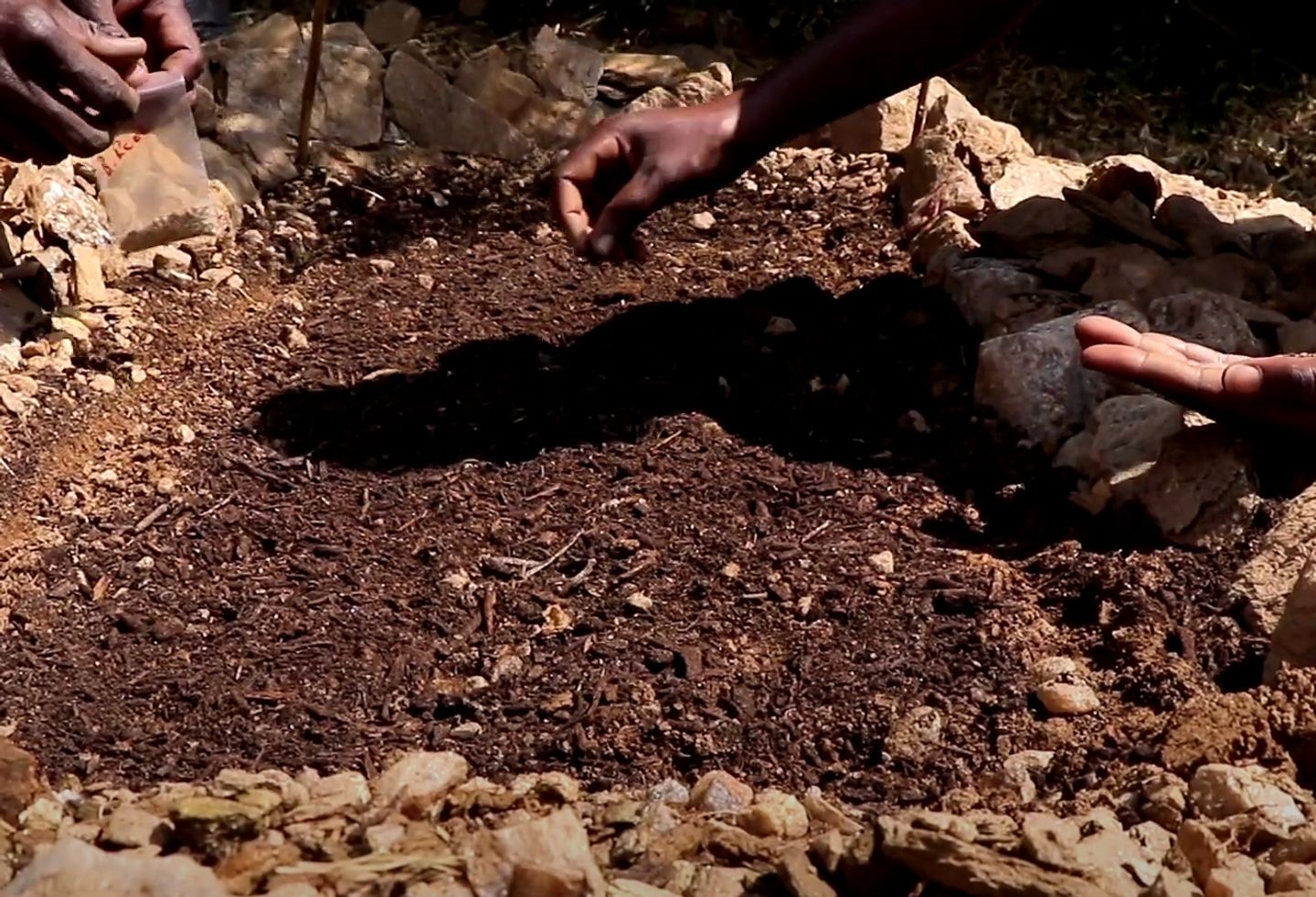
Mulch is organic matter like dry grass or even cardboard boxes and newspapers (not the glossy ones with too much colour) to cover the soil between plants to protect the soil from drying out and from becoming too hot. Your mulch also acts as a compost and is good for the fertility of your soil.
When your seeds are still in the ground, only use a little bit of mulch. Once your seeds have become plants, you can mulch the ground as thick as possible, up to 15-20cm thick. Always continue to mulch, again and again once you see your mulch is becoming less with time.
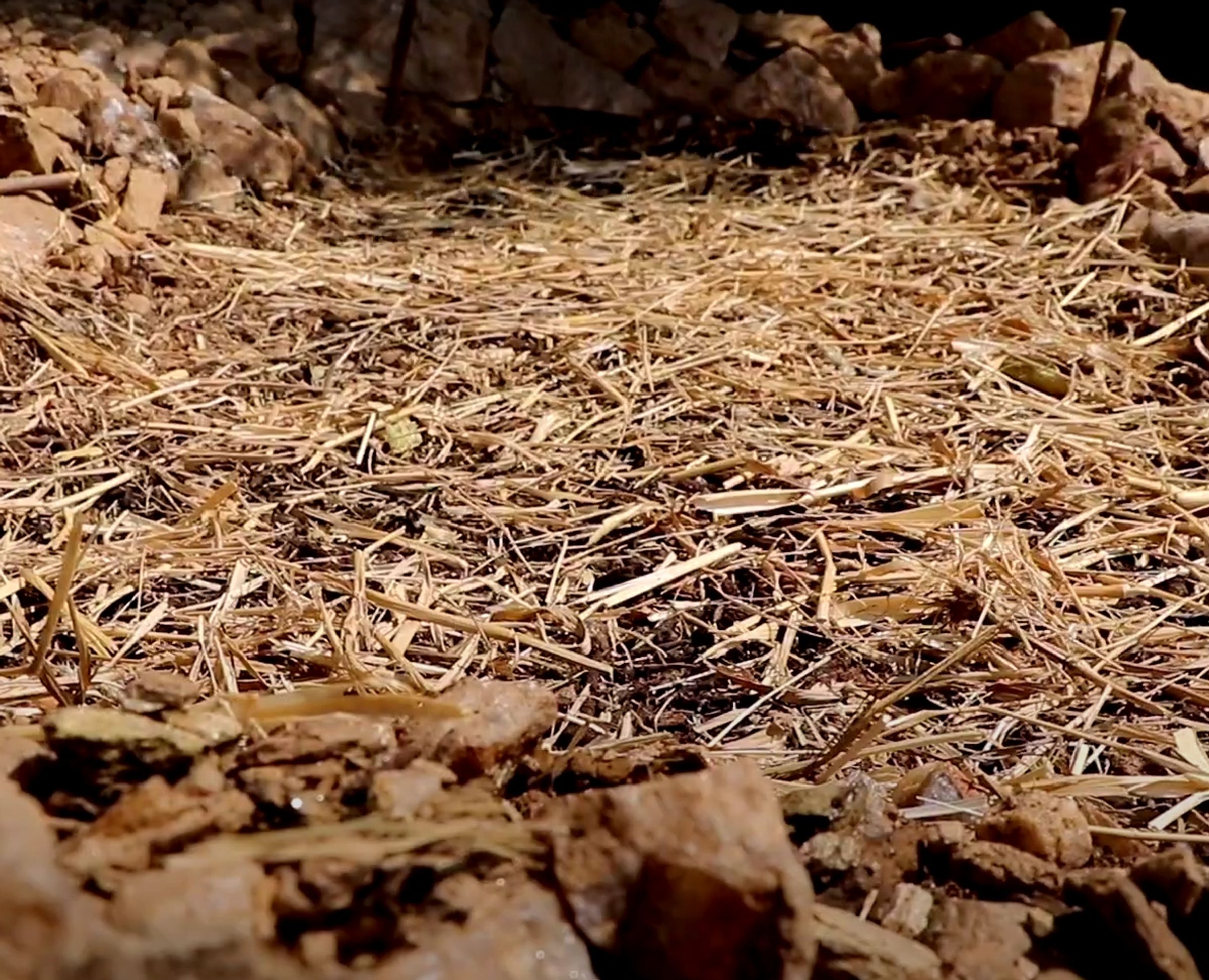
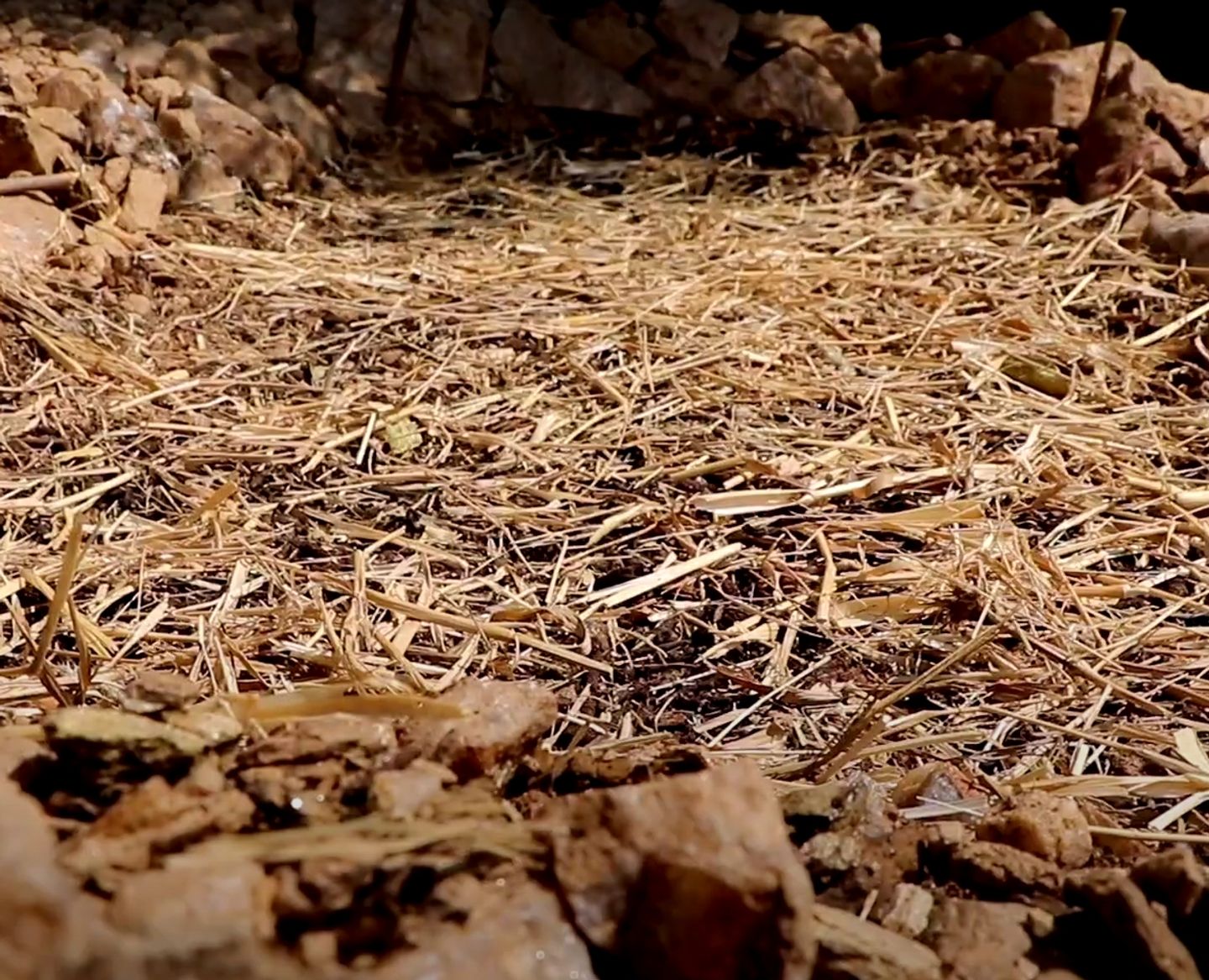
Trellis are sticks to be put into the ground to help your vertical plants, such as tomatoes, beans and cucumbers grow along these sticks.
For security, you can use cut up thorn bush and put it in your vegetable beds to keep chicken, dogs, and cats away from digging out your vegetables. Try and use whatever materials are available and appropriate to protect your garden from animals and the sun.
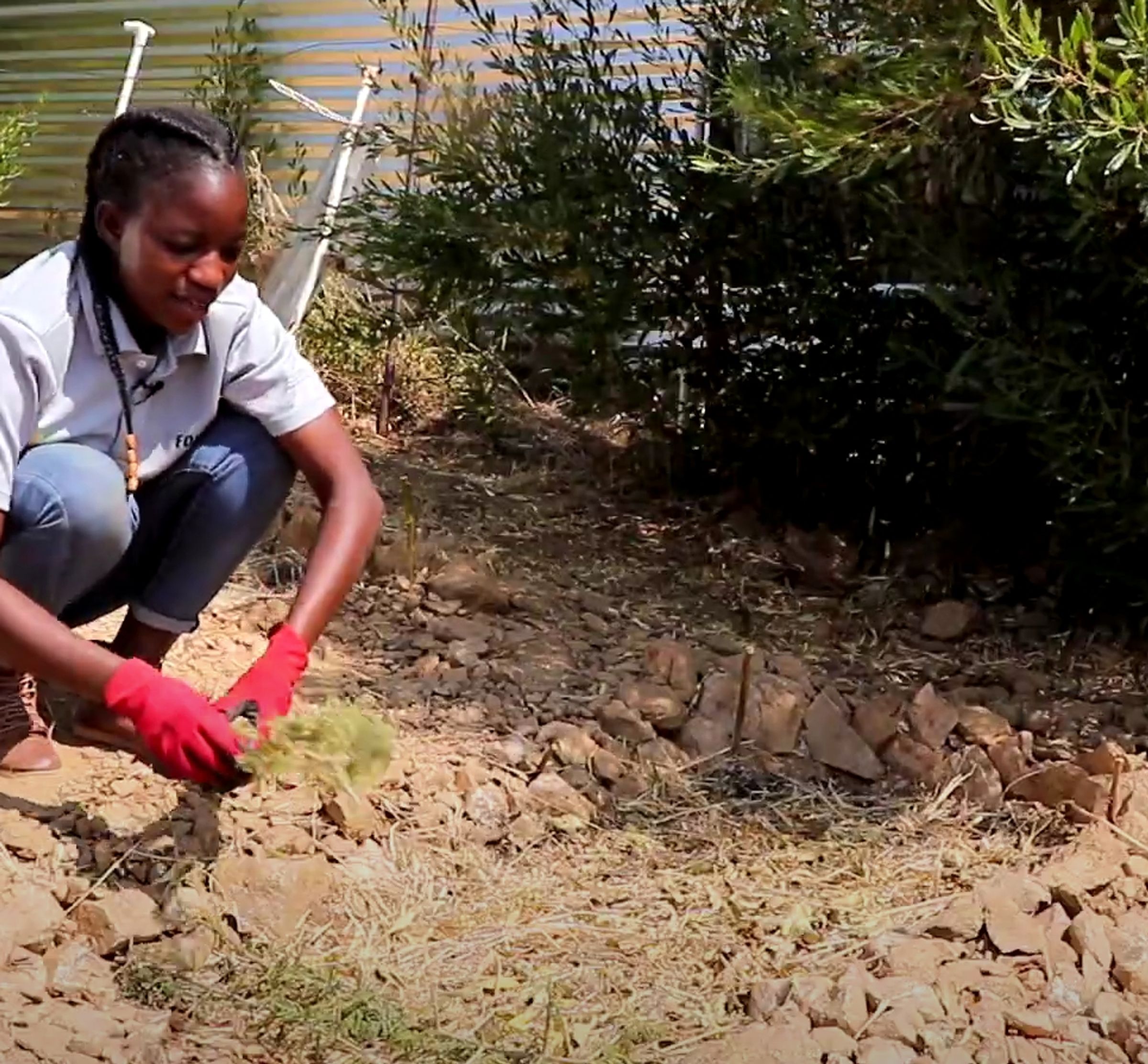
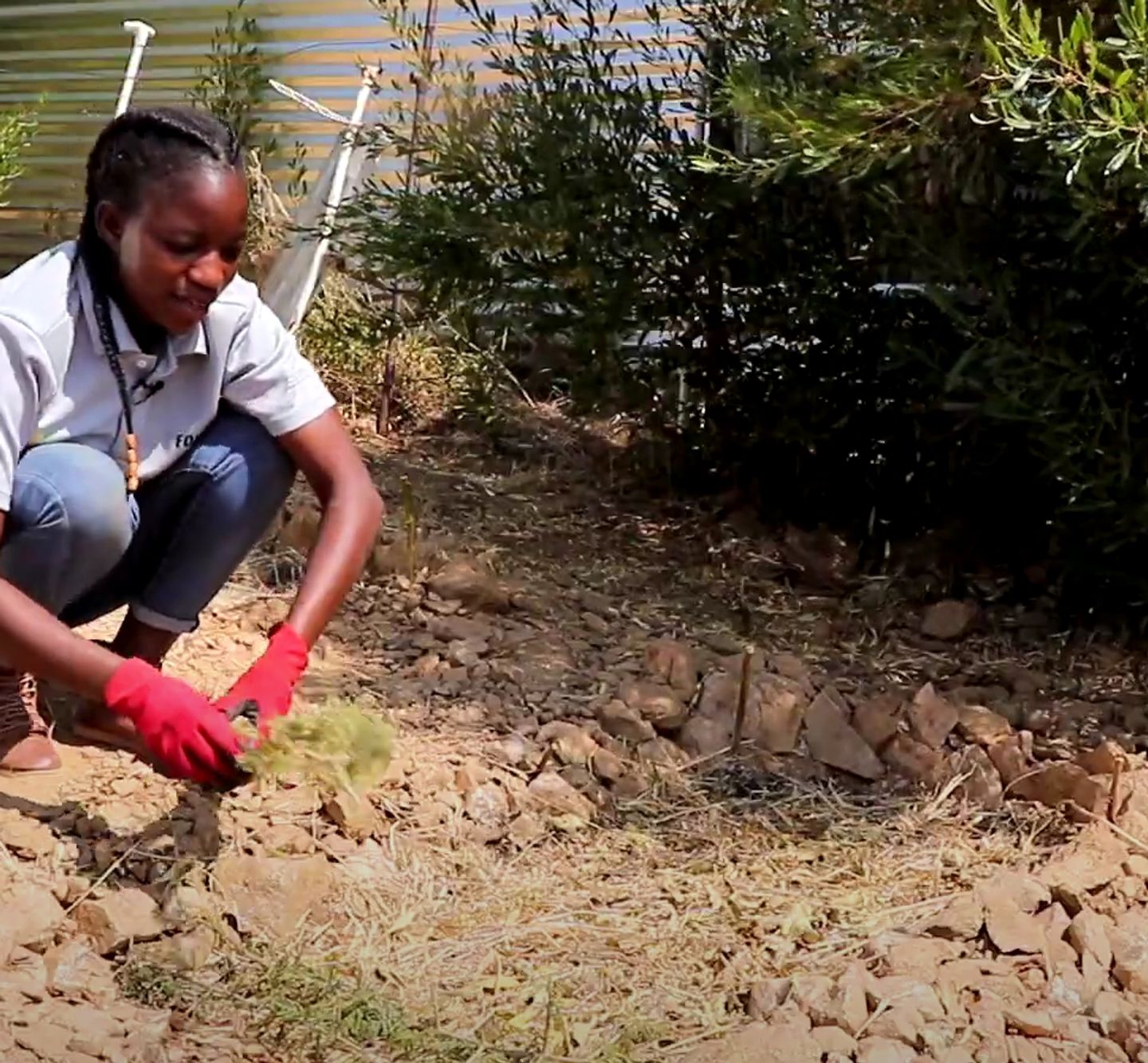
Shade nets (if you have) help protect your plants from sun and wind. Yet, do not create too much shade as your plants need sunshine to grow healthily – observe how your plants grow according to where you have planted them and how much sun/shade they get, and respond accordingly.
Once your garden beds are established, you should not turn or open the soil again at any time. Leaving your soil ‘undisturbed’ helps build optimal soil life and fertility.
Find here all the information to maintain your garden.
This guide was developed in collaboration with the Shack Dwellers Federation of Namibia, eloolo Permaculture Initiative, Urban Gardens for Nutrion and Scaling Up Nutrion. Supported by GIZ.
Fight fungal diseases and insects in your garden
If you have healthy soil and use the companion planting method,...

The perfect organic fertilizer.
Yes, the name of this hack already sounds very difficult. But effective...
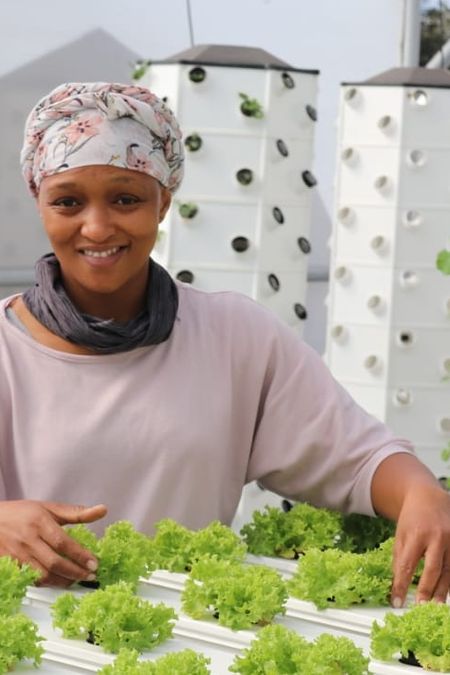
Build an EkomuroH2O+ water tank from PET cool drink bottles.
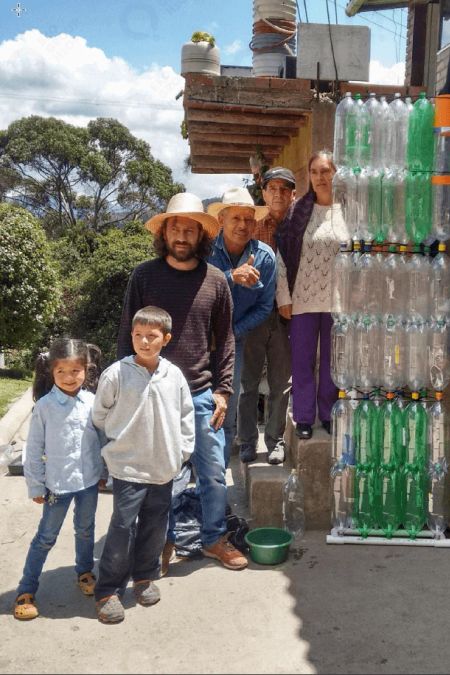
Gain more living space in your home
„FOLT“ combines a stylish table for working, eating or studying with a...


On dooiy you find fun and easy hacks that make life easier. Just follow our simple step-by-step guides and create something for your home or community with little materials and tools. Want to start a business? dooiy might be the perfect starting point for you.

from dooiy
You don‘ t have to be an expert to start making with dooiy. Just choose an easy hack and get going. After you made a few, I am sure that you will come up with your own ideas.
dooiy is being developed by passionate people in Germany and South Africa.

To fulfil our vision, we are looking for partners, volunteers, donors and people who spread the word.
Learn moreand become a partner
